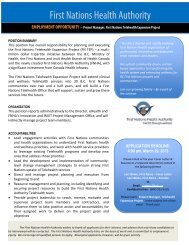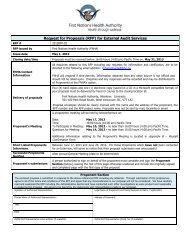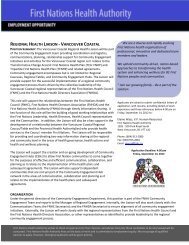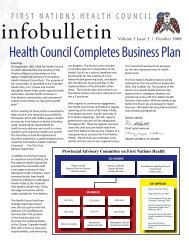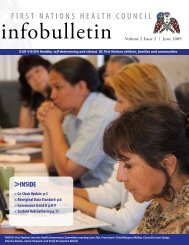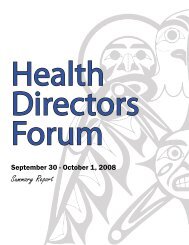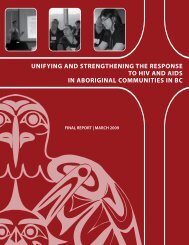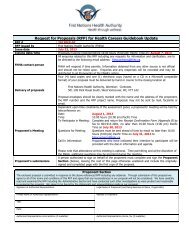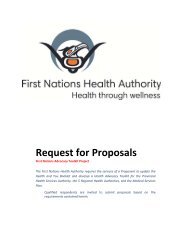NIHB Handbook - First Nations Health Council
NIHB Handbook - First Nations Health Council
NIHB Handbook - First Nations Health Council
Create successful ePaper yourself
Turn your PDF publications into a flip-book with our unique Google optimized e-Paper software.
4. DRUG BENEFITSWhat is covered?Payment is made directly to the provider in the areas listed below.Prescription drugsOver the counterdrugs (OTC)Limited use benefitsChronic RenalFailure PatientsDrugs that require a prescription from an authorized prescriber.Drugs that are listed in the Drug Benefit List at the address below.http://www.hc-sc.gc.ca/fnih-spni/pubs/drug-med/drug-med_list/list-a_e.htmlDrugs and selected health products listed in the Drug Benefit List,which do not require a prescription under provincial or federal legislation,but do require a prescription for coverage under the <strong>NIHB</strong> Program.Benefits which do not require prior approval including:– multivitamin for children up to age 6; and– prenatal and postnatal vitamins for women who are pregnant orbreastfeeding, and are between the age of 12 and 50 years.Benefits which require prior approval and for which specific criteria hasbeen established, and must be confirmed by a doctor’s completion ofthe <strong>NIHB</strong> Limited Use Drugs Request forms.Benefits which have a quality and frequency limit. A maximum quantityof [a] drug is allowed within a specific period of time.For example, an individual is eligible to receive a 3-month supply ofsmoking cessation products which is renewable 12-months from the daythe initial prescription was filled.Eligible to receive a list of supplemental benefits that are not includedin the <strong>NIHB</strong> Drug Benefit List but are required on a long-term basis.Includes: epoetin alfa products, calcium products, special multivitaminsand select nutritional supplementsPatients will be identified for coverage through the usual prior approvalprocess.General Principles1. The policy is to reimburse only the best price alternative product in a group of interchangeabledrug products so it covers the “lowest cost alternative drug” which is commonlyknown as a generic drug. However, medicine with a higher cost may be covered if thepatient has had an adverse reaction to the generic drug.2. Maximum quantities have been placed on some drugs for health and safety reasons.3. Eligible drugs are those that are available through pharmacies that require a prescriptionfor administration in a home setting or other ambulatory setting. (Ambulatory care settingsare environments that are not a “provincially/territorially funded setting (hospital/institution)or funded by any provincial/territorial programs or clinics according to provincial/territoriallegislation”.)14



